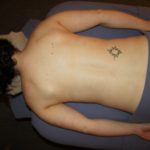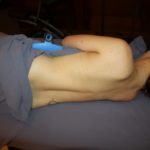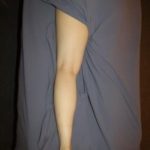What to Expect

What to expect
Your comfort before, during and after your massage session is my ultimate priority. Clients new to massage have asked various questions about what to expect regarding massage in general and about my work in particular. Below is a partial list of Q&A’s I have had over my career in Massage Therapy.
I often have new clients who have never experienced a massage before. Some are apprehensive about their first session so the following information will hopefully help ease that apprehension. Also, I work a bit differently than some other massage therapists so this might help clients new to my work as well.
Please refrain from using scented products before your massage session. Many people, including this therapist, have negative reactions to the chemicals in scented products. These products include laundry products, perfume, lotions, etc. These chemicals can cause headaches and muscle tension. Many of my clients that have been coming to me for help with headaches have reported to me that their headaches have diminished or gone away entirely when they stopped using scented products. I attempt to maintain an odor neutral facility for the comfort of everyone. Thank you for your consideration regarding this request.
Frequently Asked Questions
This is a difficult question every time I hear it. Massage is such a personal experience. If a client has a referral from a doctor for massage due to a Motor Vehicle Accident, or MVA, then we work within the guidelines set by the doctor (which can be once or twice a week for several weeks or more). For an individual paying out of pocket, such a schedule could be cost prohibitive.
If a client comes to me with several issues they need help with and we are able to make progress but not cover all the bases, then a visit in a week to address the rest might work best. If the client has minor issues and feels great after the session then my suggestion would be to be aware of how they are feeling and book again when they feel the need.
I have regular clients that book weekly, every other week, monthly, etc. If we spend a lot of time working on their issues, get them feeling better to their satisfaction and I don’t see them for 6 months – to the point that they are back where they started – then I would recommend coming in more frequently so we don’t have to start all over again.
No. While it may be easier to work directly on the skin or even though the drape it is more important to me that the client is comfortable during the session. If they are more comfortable wearing clothing then that is how we will work. It should be noted that only the areas the client gives permission to be undraped will be undraped.
Further on this page, I have displayed examples of draping during a massage session for reference.
No, I am a single therapist office, I am the only therapist working in my office. I get calls from both men and women with this question. If I feel the question is for the right reasons then I will share contact information of local female therapists.
Well, this is more of a statement but it is something I hear somewhat regularly. My question to the client is if they communicated to the therapist that they were being hurt. The answer is usually something to the effect of; “No, they should know if they are hurting me.” I explain to the client how everyone perceives pain and pressure differently. I can barely touch one person and their pain level might be very uncomfortable while another person can take all the pressure I have to give and have no discomfort. It can be difficult to tell if a person is in pain if they are good at masking it. I require my clients to communicate with me if I am using too much pressure or causing discomfort in any way. If the client liked the other therapist, other than the level of pain, then I would suggest they give the other therapist another chance.
I should also add that if a client has never had a massage or it has been a long time since their last session or if the client is dehydrated, then the client may feel sore or have darker than normal urine the next day. It is very important to maintain hydration after your massage.
My focus is directed toward therapeutic results, therefore tipping is not expected at my office. Doctors and other Health Care Professionals are not tipped. If a client insists on tipping I will accept it with appreciation, but the practice is not required. The best tip I can receive is the referral of a friend.

- Booking
- Clients with Insurance
- Arriving for Your Appointment
- The Massage Room
- After the Session
Sessions are by appointment only. Appointments are booked every two hours at the beginning of the even hour: 10 am, Noon, 2 pm, 4 pm and 6 pm.
Booking at two hour intervals allows time for client / therapist intake interviews, documenting session notes and time for clients to get ready for the session while still able to get their full hour on the table. At 6 pm, the client can choose between 60, 90 or 120 minutes.
I do not accept Health Insurance or Workers’ Comp claims. View my Local Healthcare Options page for therapists that may take Health Insurance and/or Workers’ Comp cases.
If the appointment is for therapy related to a motor vehicle accident (MVA) please submit the following information at least 4 business days prior to your appointment by Text to 503-434-1738 or in the ‘Notes’ box on the booking form:
- The name and phone number of YOUR insurance Adjuster and your insurance company. Your insurance company pays the therapist and, if at fault, the other driver’s insurance will reimburse your insurance.
- The date of the accident and The state (Oregon, Washington, etc) in which the accident occurred
- For MVA’s, a copy of a referral or prescription for massage therapy from a physician on their letter head is required
- Referrals must indicate what area(s) the physician intends to have treated by the use of ICD-10 codes
Failure to provide this information prior to the appointment will result in rescheduling the appointment.
Please be aware that your session time does not start as soon as you walk in the door. As a new client, you will need to fill out an intake form at the time of your first appointment. Forms are available at the office.
All clients will have a brief interview with me before their session begins. New client interviews will be more extensive than returning clients. New client interviews involve discussing the need for communication between client and therapist regarding; pain, pressure, areas allowed or not allowed to work and the techniques I may use, etc. Interviews with returning clients involve discussing how the previous session worked for them, what has changed or not changed and anything that they may need different.
Please allow time in your schedule to accommodate more time than you booked for these discussions and any flex time needed to wrap things up. Your 60, 90 or 120 minute session does not start until you are actually on the table and I begin working on you.
The massage room is set up with the massage table, a place to put your clothes/ shoes, and a chair for your convenience.
The massage table is equipped with a heater that the client may control, an adjustable head rest and tissues within reach of the client. Upon entering the massage room, the client is encouraged to mark on a dry-erase body chart the areas that were previously discussed to be focused on. Clients disrobe to their comfort level putting their clothing on the chair or cloths rack. The client then will lay face down under the top sheet with their face in the cradle. Once the client has had time to be situated under the drape, I will check to see if the client is ready before entering the room.
People all respond differently to massage therapy. After the session, the client usually feels relaxed but may also feel light headed. I strongly encourage my clients to hydrate after a massage. On occasion, the day after a session, a client may feel like they have had a workout the day before or even some discomfort, they also may notice their urine is darker. Typically, if a client is going to feel this, it is a first time session or they have not had a massage for a while. It is my experience that hydrating will help with this. I have seen articles on the topic that say hydrating won’t make a difference. I don’t agree. I feel it is important to stay hydrated, especially after a massage. If you have questions about tenderness or hydration after your sessions, please discuss this with me.
Draping
For your comfort, here are examples of draping during massage sessions.






